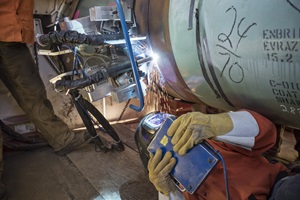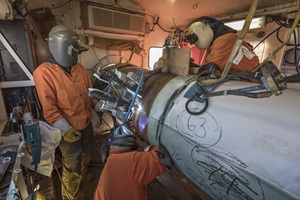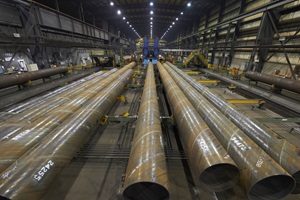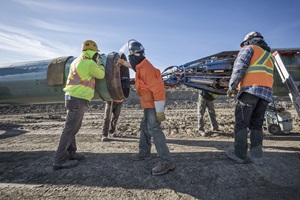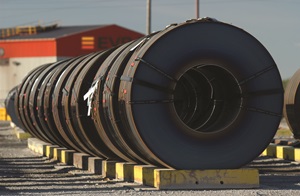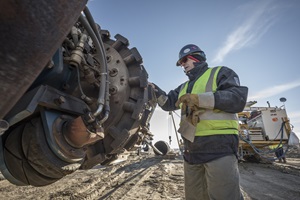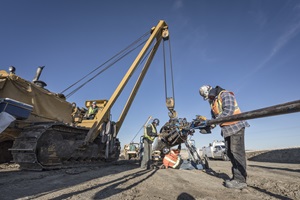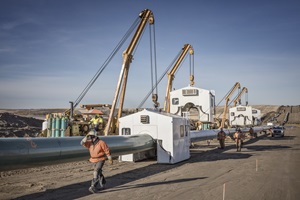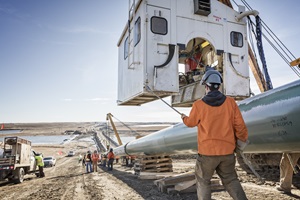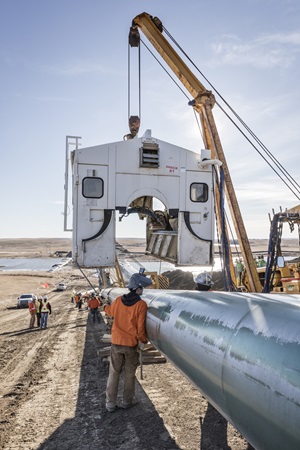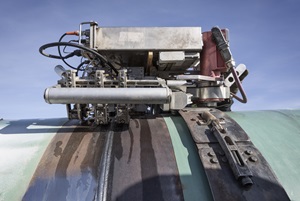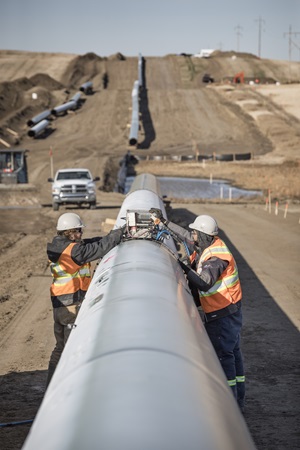‘In-motion’ X-ray exams strengthen weld safety on pipeline projects
Enbridge augments ultrasonic testing by adopting Real-Time Radiography (RTR) in the field
The process is called Non-Destructive Testing. And it encourages non-linear thinking.
NDT is a wide group of analysis techniques—used in a variety of industries, including aviation, automotive, construction, transportation and energy—to evaluate the properties of a material without causing damage.
“I look at NDT as a tool box,” says Axel Aulin, Enbridge’s senior NDT specialist. “In there, you’re going to have a crescent wrench. You’re going to have a hammer. You’re going to have a screwdriver. You can’t do the job with just a wrench or a hammer. You need different applications at different times.”
In that vein, and in the spirit of harnessing innovation in the name of safety, Enbridge recently updated its own NDT toolbox when it comes to pipeline girth weld inspections out in the field.
Starting with the Norlite project, which entered service in 2017, Enbridge has successfully tested and implemented the use of Real-Time Radiography (RTR) to inspect field girth welds—a significant step forward from traditional film-based radiographic testing (RT).
While the preferred inspection method of welds on new pipeline projects is Automated Ultrasonic Testing, RTR is a useful complementary method of inspection.
RTR is beneficial for inspecting welds with unique characteristics—including those that join pipe segments with different thicknesses, or temporary welds.
Image gallery: Pipeline welding technology
RTR, known as “in-motion digital radiography,” is performed in one continuous scan, which reduces associated exposure time, exclusion zones, and many of the potential risks inherent to conventional RT. As a continuous-motion scan, RTR also offers a faster digital image with no associated film processing errors, extra film costs, film storage requirements, or film degradation.
There’s also the added benefit of immediate remote auditing—a vast improvement over film-based radiography.
“With RTR, the field crews can e-mail the weld image to our RT assessor or auditor, so it can be examined immediately,” notes Aulin. “As a result, we’ve been able to reduce the amount of unnecessary rework due to non-compliant radiographic film images.”
“In Canada, we’re the first operator (in the Canadian Energy Pipelines Association) to implement RTR and address it in our specifications,” says Aulin.
“Automated Ultrasonic Testing has seen great progress, worldwide, but in my opinion there may always be a need for RTR.”
(TOP PHOTO: Enbridge has implemented the use of Real-Time Radiography (RTR) to inspect field girth welds on pipeline projects like the Line 3 Replacement Program.)




